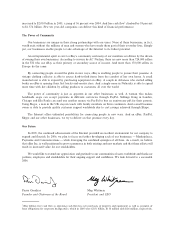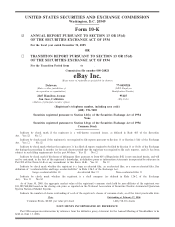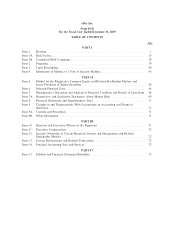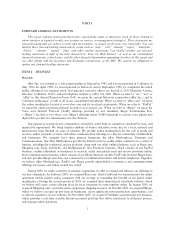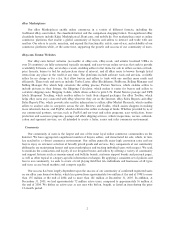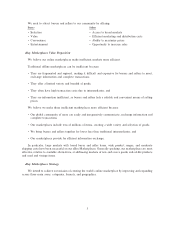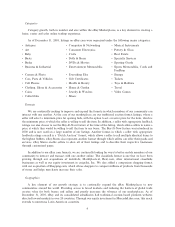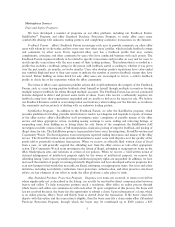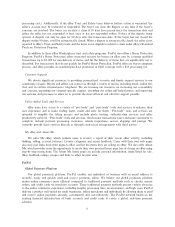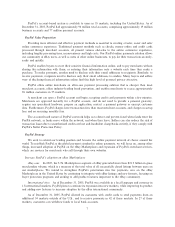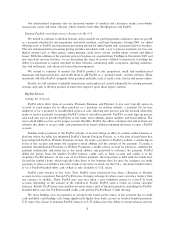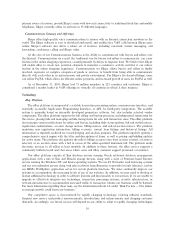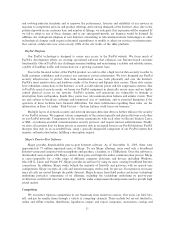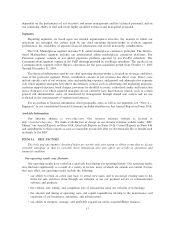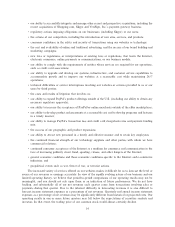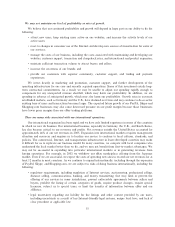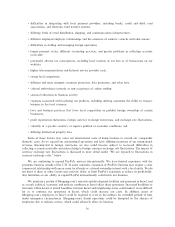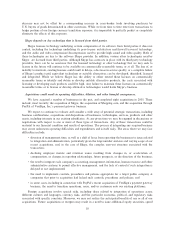eBay 2005 Annual Report Download - page 12
Download and view the complete annual report
Please find page 12 of the 2005 eBay annual report below. You can navigate through the pages in the report by either clicking on the pages listed below, or by using the keyword search tool below to find specific information within the annual report.Our international expansion into an increased number of markets and currencies makes cross-border
transactions easier and more efficient, which benefits both eBay Marketplaces and PayPal.
Expand PayPal's merchant services business in the U.S.
We intend to continue to develop features and to market our global payments solution to spur our growth
as a payment solution for sole proprietors and small, medium, and large businesses. During 2005, we added
offerings such as PayPal micropayments processing pricing for digital goods and a payment gateway business.
The new micropayments processing pricing provides merchants with a way to process payments for low-cost
digital content such as video games, online greeting cards, news articles, mobile phone content and digital
music. With the addition of the payment gateway business we acquired from VeriSign in November 2005 and
new merchant services features, we are increasing the types of services offered to merchants, including the
ability for merchants to control checkout on their websites, automating order acceptance, splitting authoriza-
tion and settlement, and advanced transaction management.
We intend to continue to market the PayPal product to sole proprietors, small and medium-sized
businesses and large merchants, and enable them to add PayPal as a ""payment mark'' on their websites. These
merchants will offer PayPal, alongside other payment methods, such as credit cards, checks and money orders.
Finally, we will continue to identify transactions and markets not served adequately by existing payment
systems and seek to develop product features that improve upon those legacy systems.
PayPal Services
Joining the Network
PayPal offers three types of accounts: Personal, Business, and Premier. A new user typically opens an
account to send money for an eBay purchase or a purchase on another website, a payment for services
rendered, or for a payment to an individual in lieu of cash. Allowing new users to join the network when they
make or receive payments encourages PayPal's natural, user-driven growth. PayPal's account sign-up process
asks each new user to provide PayPal his or her name, street address, phone number, and email address. The
user's email address serves as the unique account identifier. PayPal also offers customers who sell on their own
websites the ability to accept credit card payments from buyers without requiring the buyer to open a PayPal
account.
Senders make payments at the PayPal website, at an item listing on eBay or another online business or
platform where the seller has integrated PayPal's Instant Purchase Feature, or at the sites of merchants that
have integrated PayPal's Website Payments feature. To make a payment at PayPal's website, a sender logs in
to his or her account and enters the recipient's email address and the amount of the payment. To make a
payment through Instant Purchase or Website Payments, a sender selects an item for purchase, confirms the
payment information and enters his or her email address and password to authorize the payment. PayPal
debits the money from the sender's PayPal balance, credit card, or bank account and credits it to the
recipient's PayPal balance. In the case of an eCheck payment, the transaction is held until the funds have
cleared the sender's bank, which typically takes three to five business days. In turn, the recipient can make
payments to others or withdraw his or her funds at any time via check (in the U.S.), electronic funds transfer,
or via a PayPal-branded debit card (which is only available to U.S. users).
PayPal earns revenue in five ways. First, PayPal earns transaction fees when a Business or Premier
account receives a payment. Second, PayPal earns a foreign exchange fee when a user converts a balance from
one currency to another. Third, PayPal may earn fees when a user withdraws money to a non-U.S. bank
account, depending on the amount of the withdrawal. Fourth, PayPal earns a return on certain customer
balances. Finally, PayPal may earn ancillary revenues from a suite of financial products, including the PayPal-
branded debit card, the PayPal-branded credit card and the PayPal Buyer Credit offering.
We incur funding costs on payments at varying levels based on the source of the payment due to credit
card and debit card funding costs being significantly higher than bank account or balance-funded payments.
U.S. users who choose to maintain PayPal balances in U.S. dollars have the ability to sweep balances into the
8


